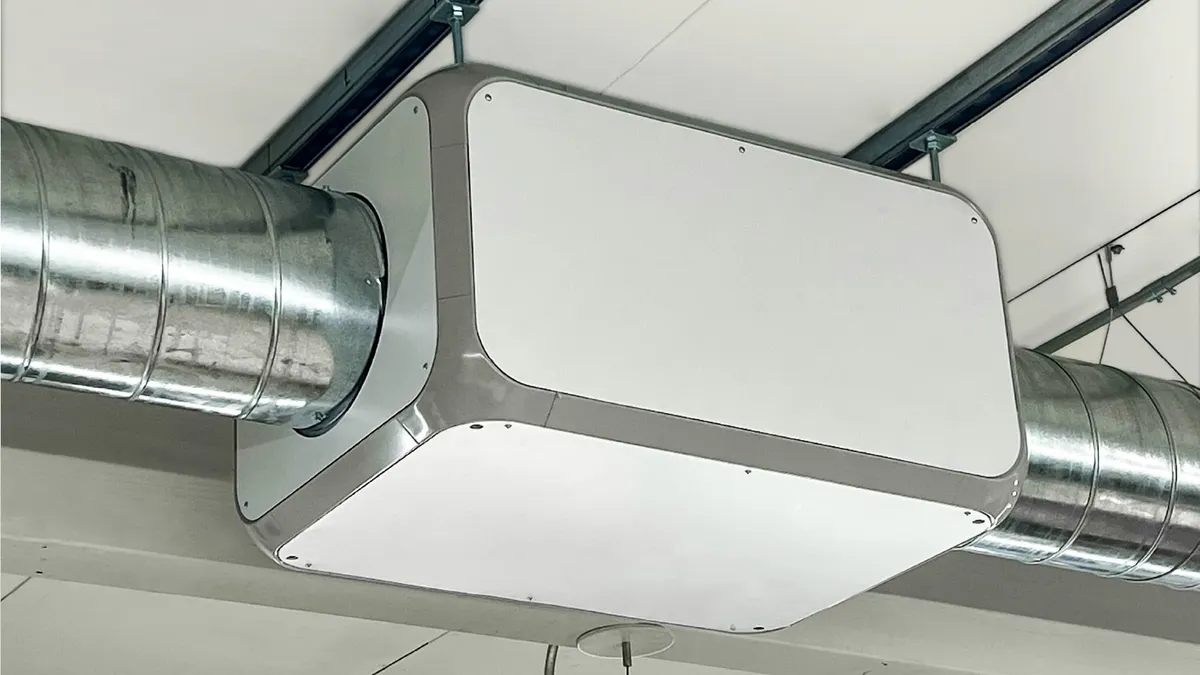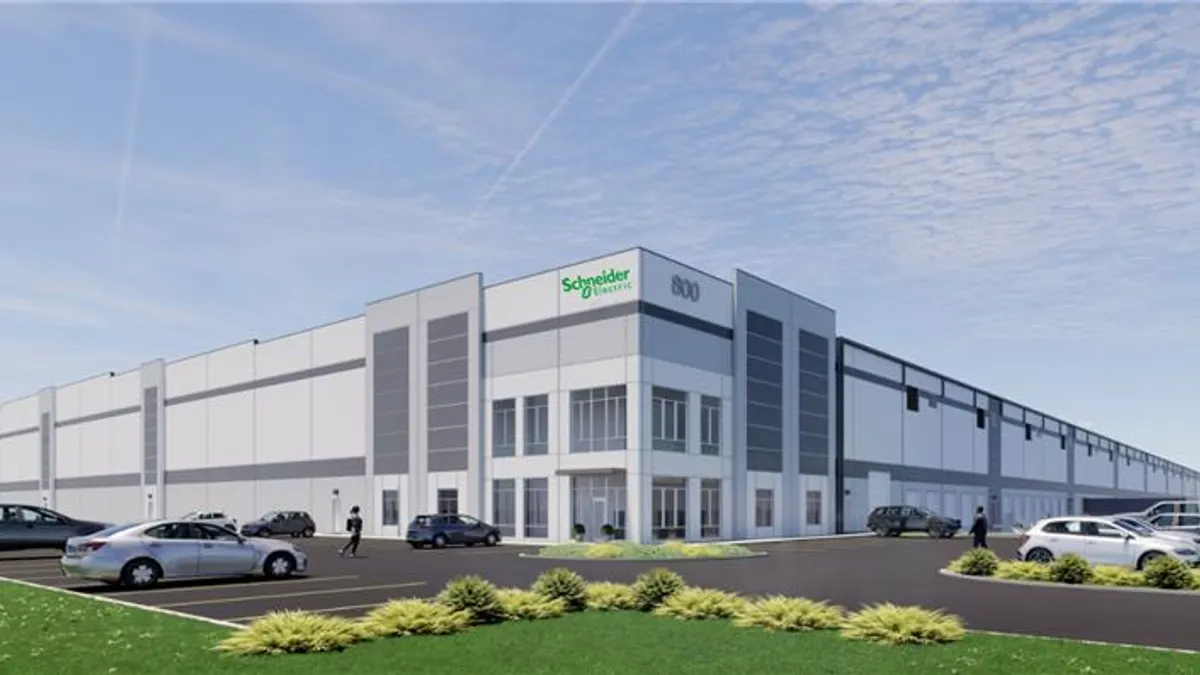The 2025 outlook for facilities managers and building owners seems to be in sharp contrast to 2024. A steady easing of interest rates by the Federal Reserve and firmer decisions on workplace attendance models are creating more clarity and activity in the market. However, questions remain as to how the incoming Trump administration will change energy, labor and tax policies that could impact building investments and operations.
After years of collecting data on occupancy, energy use and asset health, building operators hope that innovative artificial intelligence applications can leverage this data to improve processes, systems and operations. Their goals: optimize space and system designs, boost value and attract tenants, while saving costs and mitigating the effects of skilled labor shortages.
The rise of AI across almost every industry and sector is driving rapid acceleration in the data center market, including its electricity needs, market activity and cooling requirements. While new projects grapple with power availability, existing facilities face the need to update their infrastructure and cooling systems to meet more advanced system demands and energy efficiency requirements.
Here are six trends that are top of mind for facilities managers in 2024.
Business goals and local policies are driving building sustainability efforts
Tightening climate regulations and corporate ESG priorities are driving facilities managers and owners to increasingly invest in green building technologies, according to a November JLL report. But Inflation Reduction Act incentives face uncertainty in light of President-elect Donald Trump’s criticism. Trump’s agenda calls for reversing Biden administration policies that support renewable energy, electrification and energy efficiency, raising concerns among building owners and operators who have been utilizing IRA tax incentives for energy-efficient building retrofits.
Owners and operators of large commercial buildings are not overly reliant on IRA incentives, according to Jennifer Nuckles, CEO of R-Zero, which develops energy optimization tools for commercial properties. They are looking at energy efficiency measures as an opportunity, prioritizing measures to boost the value of their buildings, Nuckles said.
Megan Krest, associate director of ESG and sustainability for Cushman & Wakefield’s energy and sustainability services team, emphasizes the need for a phased, data-driven approach to energy-efficient upgrades. “Quantifying energy use intensity to determine payback periods can help to provide a stronger business case for investment,” Krest said.
Without a federal government push for building decarbonization, local governments and multinational corporations will lead the charge, according to Paul Morgan, global chief operating officer at JLL Work Dynamics. Multinational organizations operating in regions with aggressive decarbonization strategies are expected to adopt an enterprise-wide approach to harmonize sustainability efforts “versus a single-country approach,” Morgan said.
Skilled labor shortages continue
Demand remains high for skilled trades workers — such as HVAC technicians, plumbers and electrical services professionals — in facilities management. Even though the U.S. unemployment rate ticked up to about 4.2% in November, employers are struggling to fill open skilled trades roles, said Andy Voelker, associate partner at McKinsey & Co.’s people and organizational performance practice.
Voelker emphasizes the importance of training and upskilling in addressing the tight labor pool. “By decreasing the time it takes to get an employee to a level of basic proficiency, employers are making the bet that they can operate sustainably with less labor,” Voelker said.
The U.S. Department of Labor recently withdrew its proposed overhaul of government-registered apprenticeship programs, which sought to strengthen their labor standards and further promote apprenticeship pathways.
Ben Brubeck, vice president of regulatory, labor and state affairs at the Associated Builders and Contractors, called the DOL’s decision a “welcome development.” ABC previously criticized the proposed changes, saying they would increase regulatory burdens and costs on small businesses that could worsen labor shortages.
“The GRAP system is already underutilized because of burdensome regulations and its failure to meet the needs of many employers and apprentices alike,” Brubeck said.
To combat the skilled trade worker shortage, “2025 will see teams moving toward hybrid working models by combining centralized and distributed employees,” said Katie Gramajo, senior education facilities specialist at Brightly Software.
AI and automation grow in building operations
After years of working to gather building data, facilities managers now hope artificial intelligence will help them use that data to inform decision-making and, paired with automation, streamline and optimize operations.
Service providers are working to integrate generative AI into their systems and operations to help facilities management staff diagnose and address issues more effectively and to help train new workers, according to the International Facility Management Association’s guide on AI for facilities management, released in October. For example, AI is being used to automate routine time-consuming tasks, optimize operational processes and monitor equipment in real time to identify inefficiencies and suggest adjustments to improve performance, the IFMA guide notes.
At the same time, more traditional machine learning and automation continue to accelerate. AI-driven energy-use models are being used to determine optimal building control strategies and program automatic adjustments to system setpoints for more efficient building operations.
Efforts to date are just the tip of the iceberg, however, said Sharad Rastogi, CEO of Work Dynamics Technology at JLL. “There’s a huge opportunity still. There’s a lot of data with sensors and automation systems which is not really being used,” Rastogi said. “I don't think we have truly realized the full benefits of automation of a building because all the links are not [yet] connected, and that's what we're doing [this year].”
RTO efforts and office upgrades focus on employee experience
The office market remains in flux as organizations grapple with space decisions, evolving workplace models and shifting employee and tenant preferences. Hybrid work arrangements are expected to persist, and many occupiers are accepting current attendance rates as the new normal. At the same time, in a survey of 198 real estate professionals conducted by CBRE and CoreNet Global, over half of respondents say they plan to boost in-office attendance from current levels.
Face-to-face collaboration remains a top driver for employees to be in the office, according to a survey by Unispace. But challenges persist, including space configuration, noise, interruptions and a continued lack of actionable insights related to workplace design, Unispace stated in a recent report.
Operators are working to leverage occupancy data and workplace experience to better align employee and employer expectations, according to Ross Leibowitz, senior director of workplace products at Tango. “Employee experience really starts with understanding the anxiety points and being able to … help mitigate those,” Leibowitz said. “I think everybody has to understand what's right for their organization.”
Vacancy in prime buildings has been declining for multiple quarters due to demand for best-in-class office stock, but “there is almost no development happening from here on out,” said Julie Whelan, global head of occupier thought leadership at CBRE, in an interview. “What that means is that some of these buildings that maybe aren't great quality, but are near those [prime] buildings, should be putting some capital into their own building.”
“There's actually a lot of upgrades and renovations that need to be done to existing offices,” Whelan said. “Everybody's talking about conversions … But the reality is, there's quite a few buildings that need to be brought up to standard.”
The industry adapts to data center growth and power concerns
Data centers are increasingly focusing on cleaner, more efficient power and streamlined operations that can help them meet the soaring, AI-driven demand for computing capabilities.
“From a supply-side perspective, under construction, data centers are expected to reach record highs in 2025,” Gordon Dolven, director of Americas data center research at CBRE, said during a 2025 webinar. “Demand for modern data center facilities continues to soar as hyperscalers and enterprises plan to expand their digital infrastructure, and the scale of data center development in 2025 will result in a 100+-megawatt type of project being the new norm.”
To address these demands, data center operators are seeking technical expertise that can help them find the high-density liquid cooling applications they need for advanced computing while ensuring energy efficiency and operational flexibility to support both new and existing infrastructure.
In response, commercial real estate firms, service providers, building automation vendors, technology giants and energy providers are joining forces to bolster their expertise and capabilities. Some expect M&A activity within the data center services industry to hit new peaks. “I think 2025 is going to be a record year for M&A, if I had to predict it,” Roger Little, CEO of Rexel USA, an electrical, heating, lighting and plumbing equipment distribution and management firm, told TED Magazine.
Federal worker RTO mandates and workforce cuts could impact federal office space
Tesla Motors and SpaceX CEO Elon Musk and former pharmaceutical executive and GOP presidential candidate Vivek Ramaswamy, tapped to lead President-elect Trump’s Department of Government Efficiency, outlined a plan for the federal workforce in a November Wall Street Journal opinion piece. They called for substantial reductions in the federal workforce and mandatory return-to-office five days a week for the workers that remain.
A full-scale return-to-office mandate would boost utilization rates of federal office buildings to varying degrees, according to David Marroni, director of physical infrastructure at the U.S. Government Accountability Office. But some federal buildings are likely to remain “significantly underutilized” despite an increased in-person presence, Marroni said.
The federal government spends almost $8.1 billion a year on office space it owns or leases, the Office of Management and Budget stated in a report it published in August, including $81 million on space it considers “underutilized.” The OMB reported that agencies plan to shed millions of square feet of office space to improve space utilization and cut costs.
On Jan. 4, President Joe Biden signed a law that includes provisions for the federal government to cut wasteful spending on unused leased office properties, in part by setting and enforcing occupancy standards.
With an RTO mandate, however, some agencies may need to acquire more space if they have downsized their portfolios since the COVID-19 pandemic and no longer have enough to support an increased in-person presence, Marroni said.






















